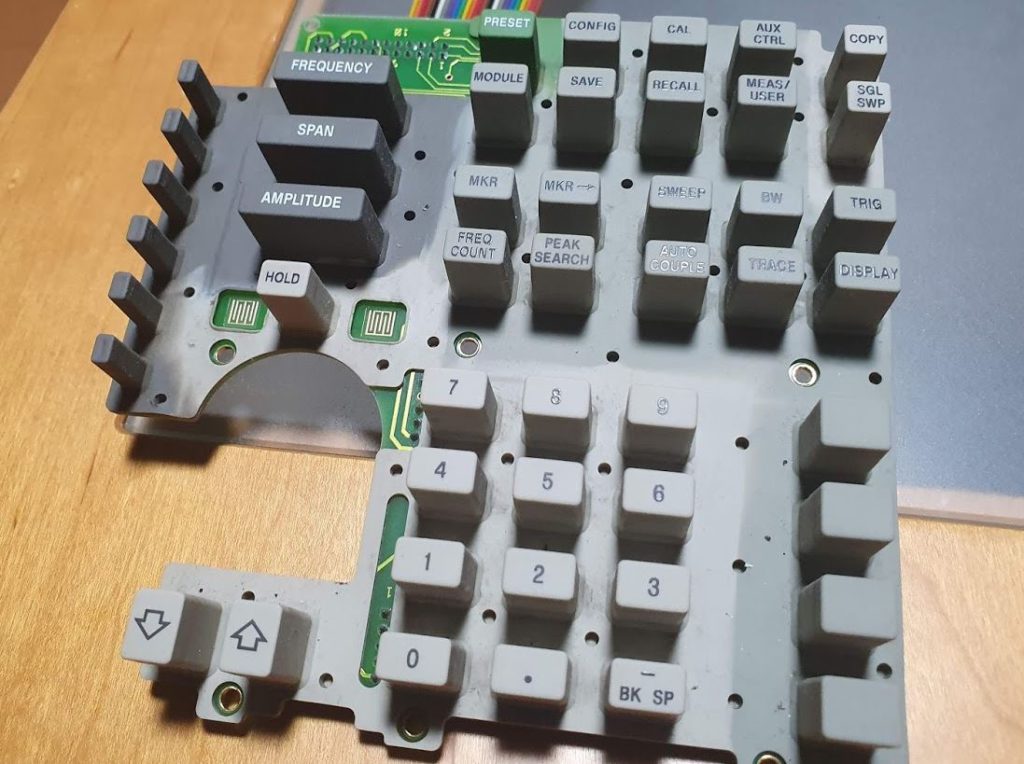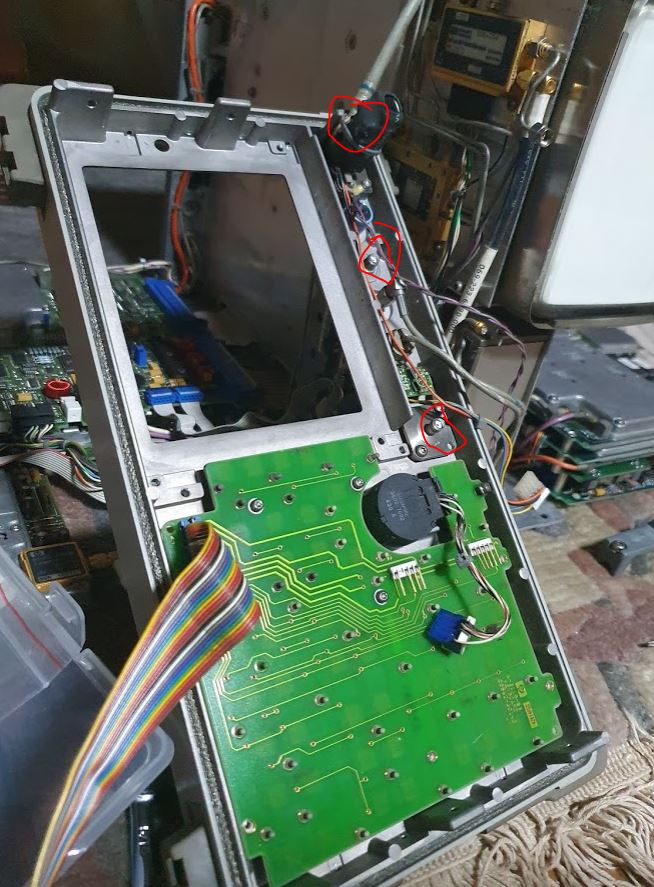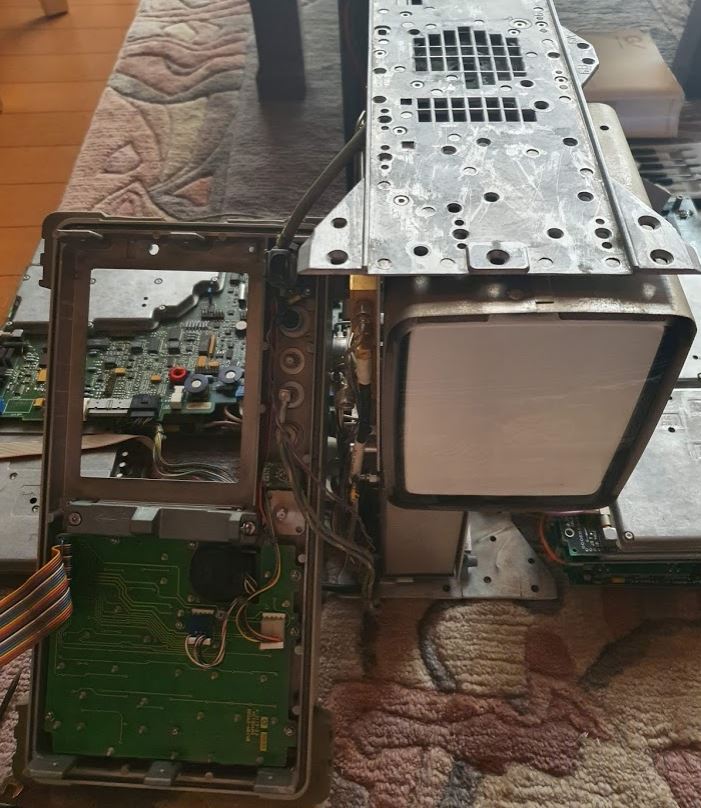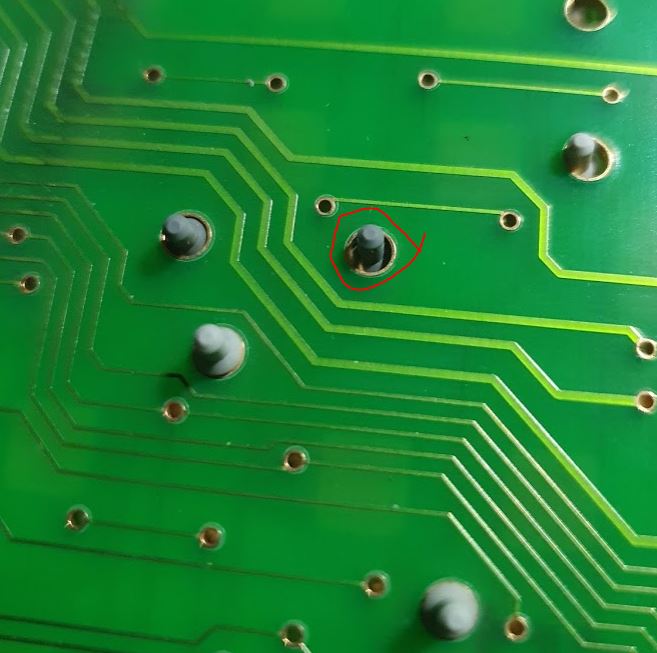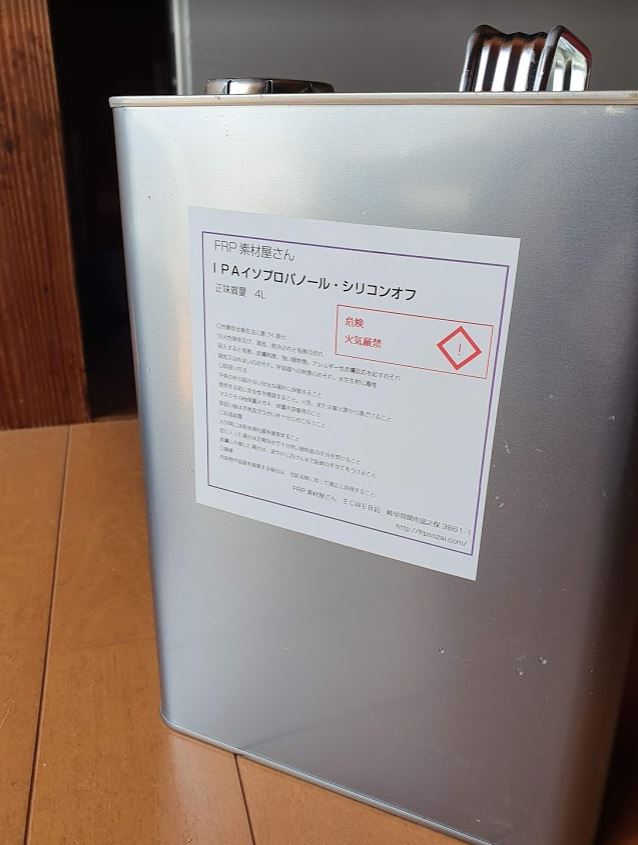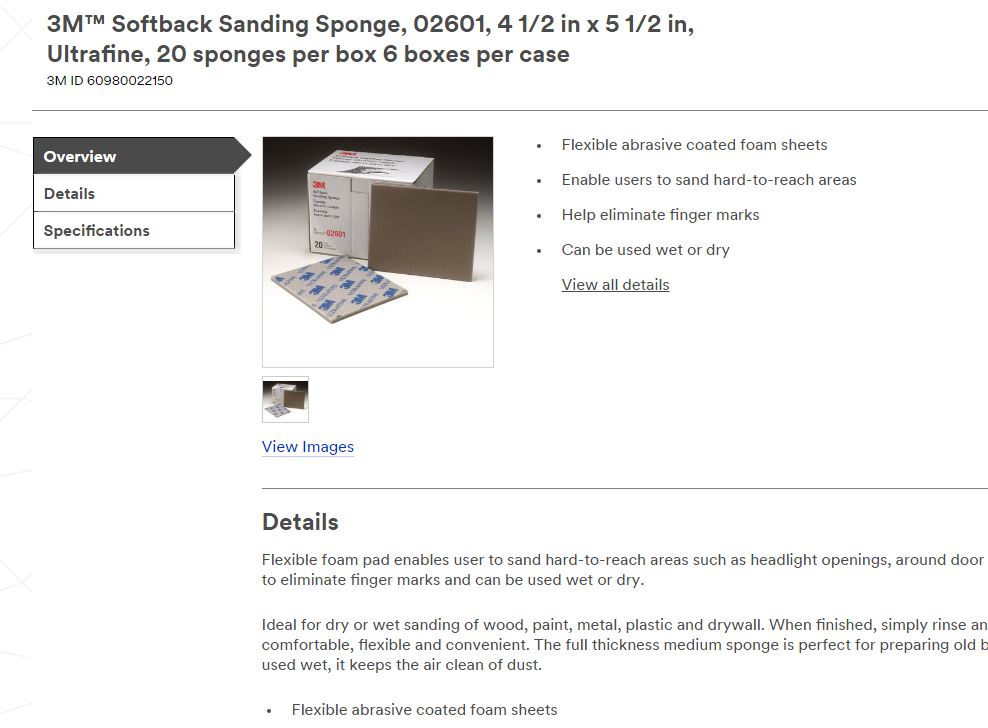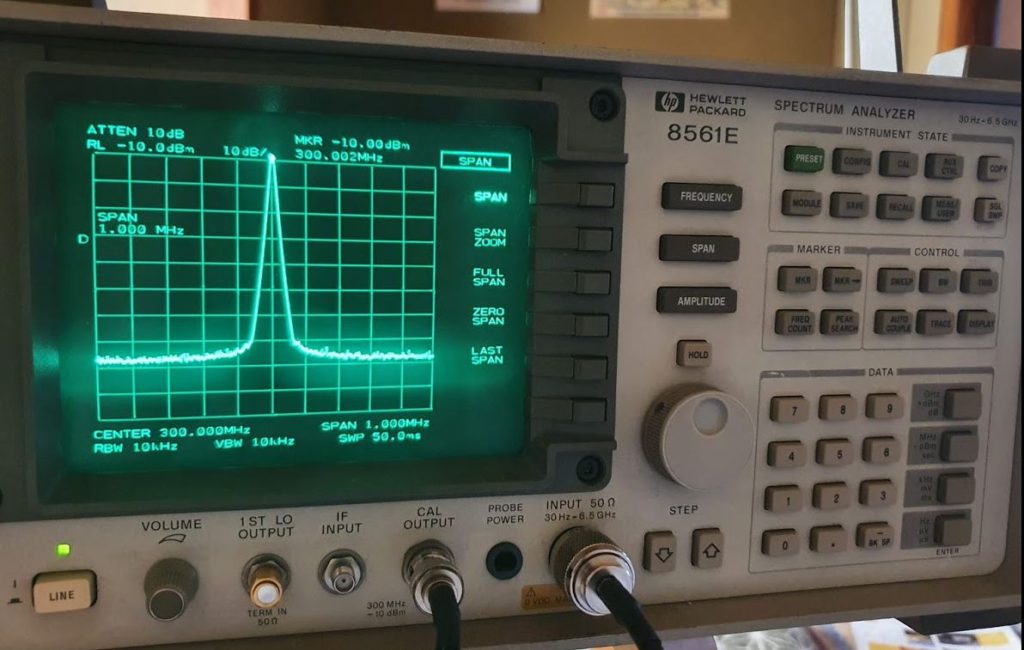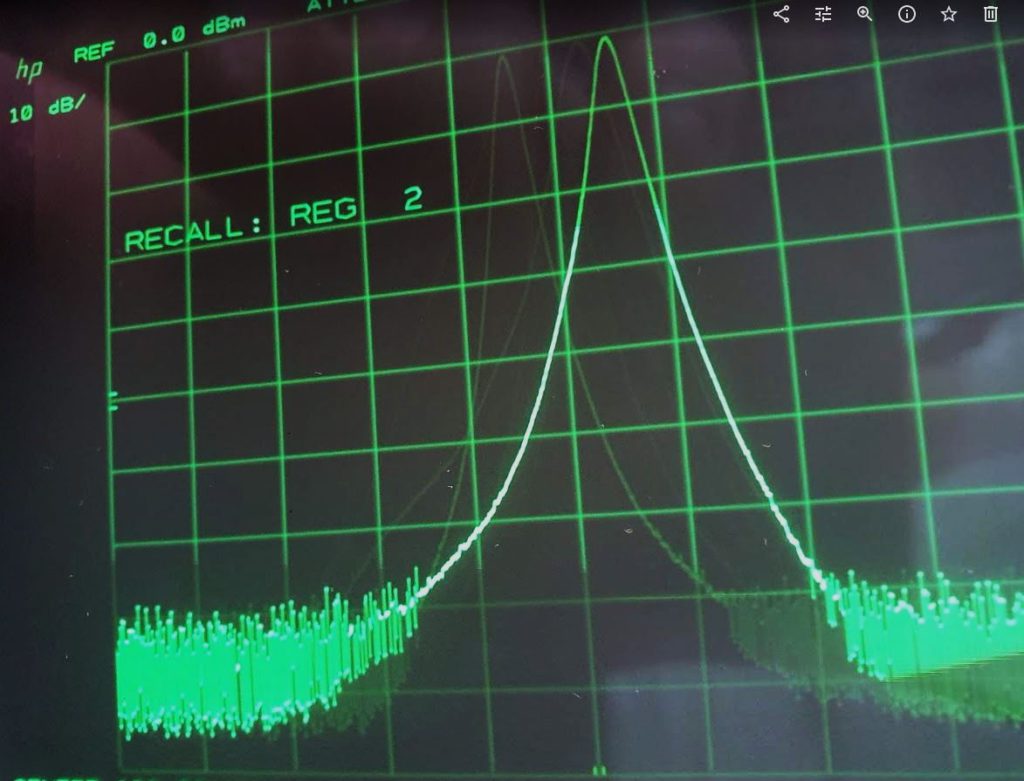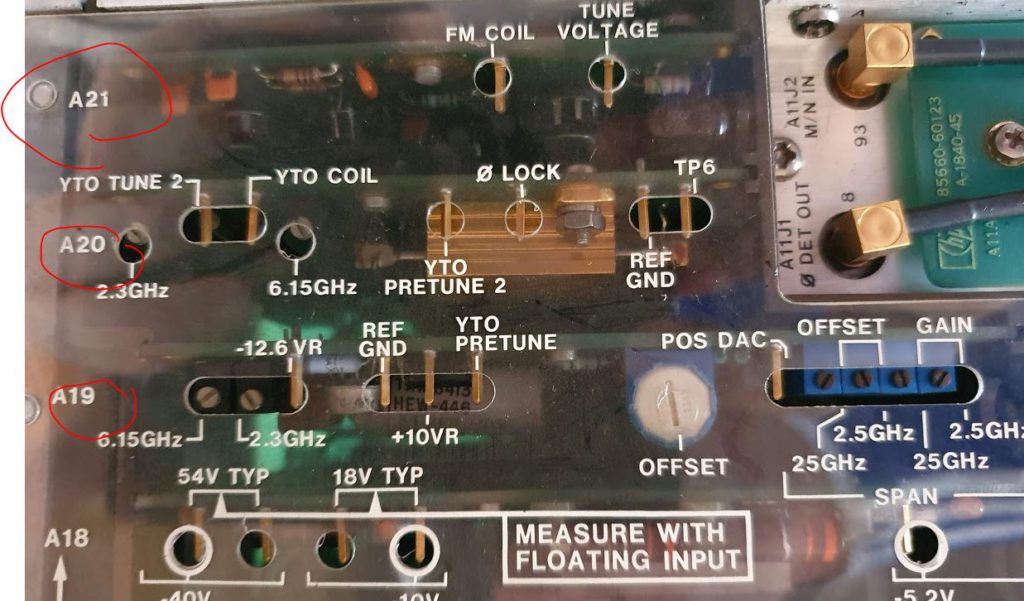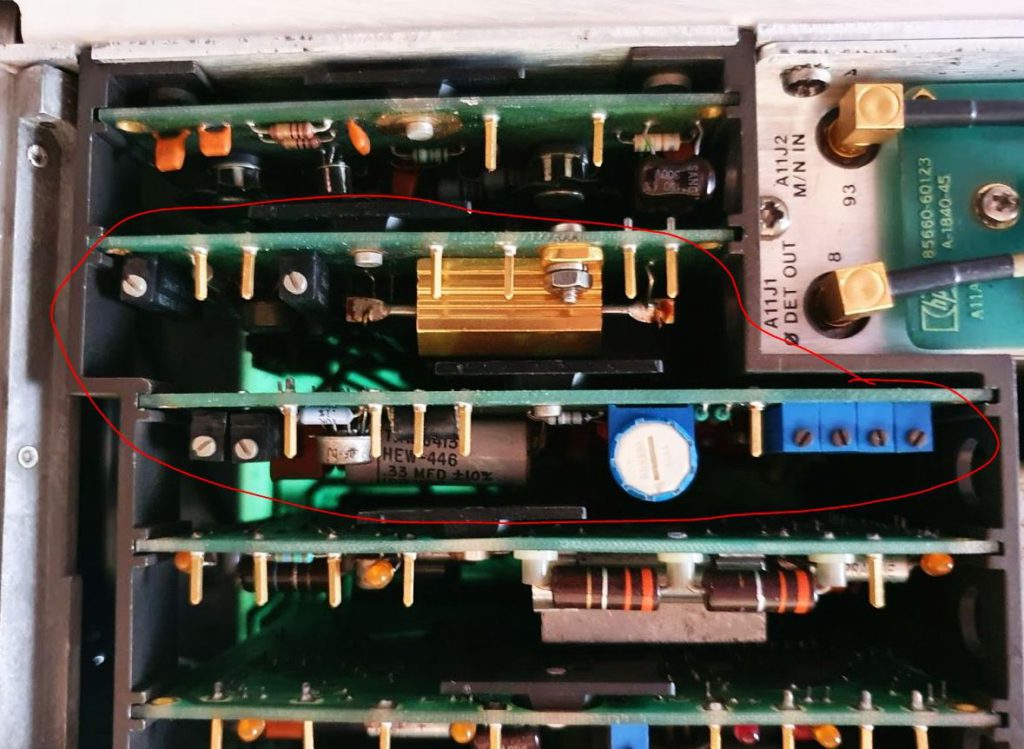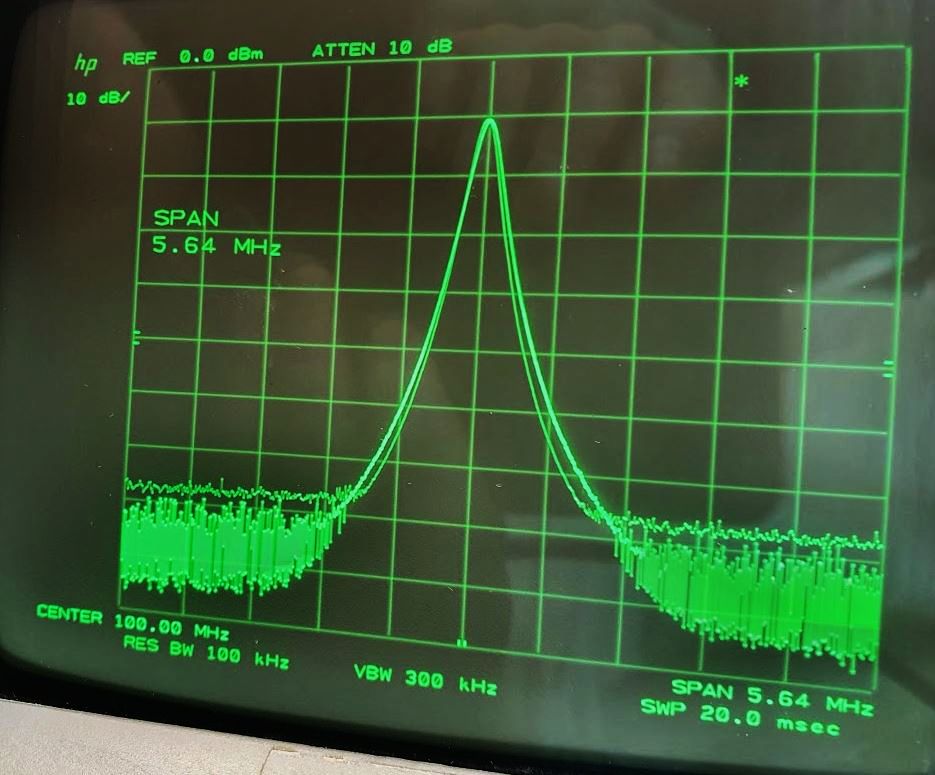The famous and still very common HP 856x and 859x analyzers come in two versions of keypads, the earlier A, B models have hard-plastic buttons that go to individual switches, while the later models feature rubber keypads. Sure such rubber pads are good to touch and easy to use, however, very commonly they develop issues over time for these HP instruments, the buttons will eventually only react to the strongest push, making the analyzer bothersome to use.
Having fixed many of these, here the instructions how to fix the issue, and the repair seems to hold up well (some instruments already fixed 8 years back still good today).
To remove the keypad, you have to take off all the front panel, carefully disconnect the SMA connectors, and make sure not to damage the power cable. Best do it on an ESD surface, or other non static surface like an old moist carpet, a piece of cardboard, or wood. Make sure all is clean (this instrument doesn’t tolerate cut-off wires and solder droplets inside, floating around on your workbench).
Disassembly proceeds with some good screwdrivers.
The keypad has some extensions, these must be pushed out, don’t pull off the keypad from the front!!
Soak the whole rubber in 70% Isopropyl alcohol (I take 99.9% and mix with distilled water), good enough to soak for 5 minutes at room temperature, then just take it out, dry overnight on a paper towel, maybe cover it up with some paper if you are in a dusty workshop.
The board with the gold contacts, I first wash it with 99.9% isopropanol, then use an abrasive sponge (ultrafine), to give it a light polish, just one stroke, at an 45 degree angle over the contact area, and another stroke prependicular to it. Don’t scratch off the gold! Afterwards clean and polish a bit with a paper towel and pure isopropanol. Let it dry overnight.
Then, after assembly (don’t overtighten the SMA connectors, don’t squeeze or damage any of the cables, don’t use force on the boards), all will be good.
Working like new, how pleasant to use!

